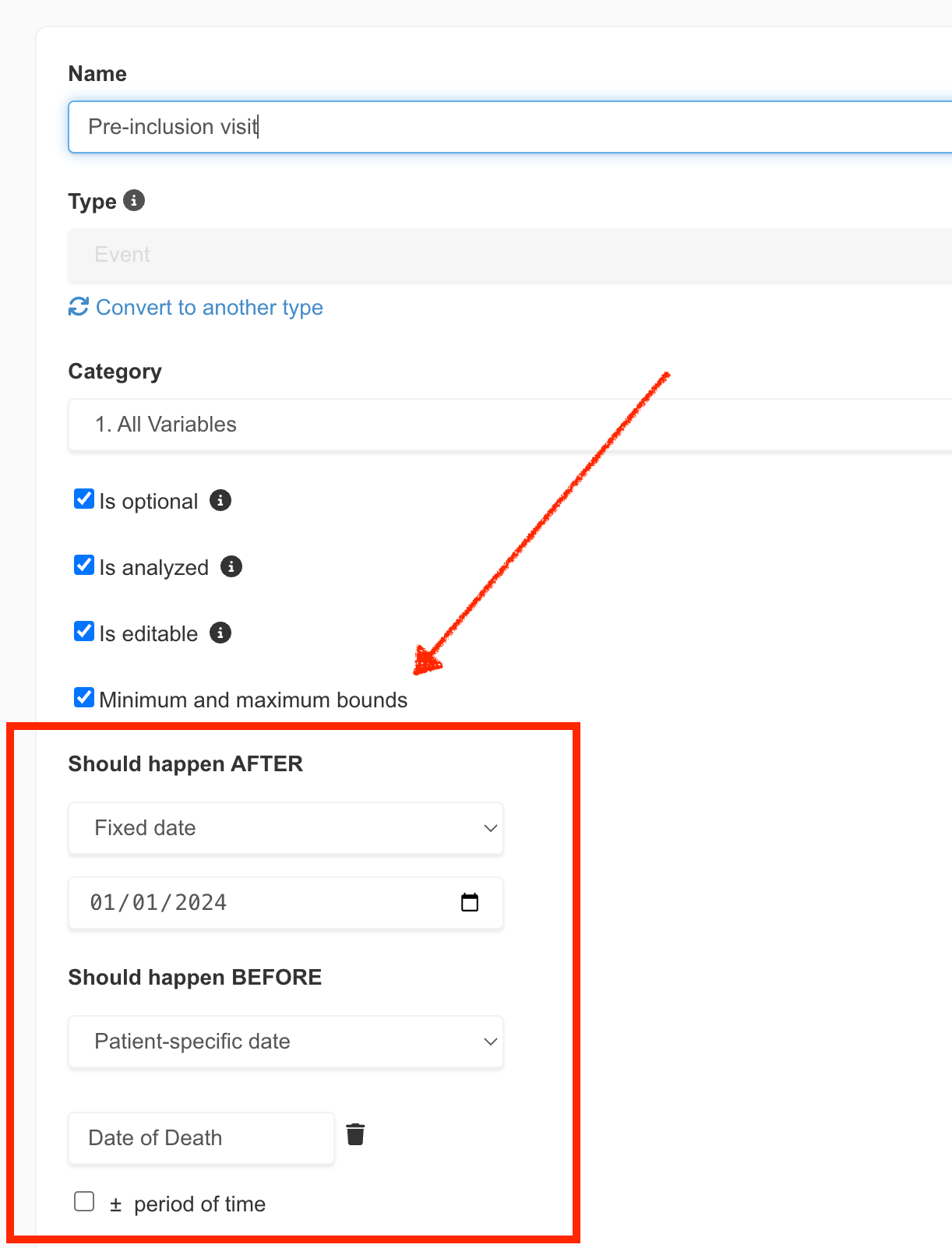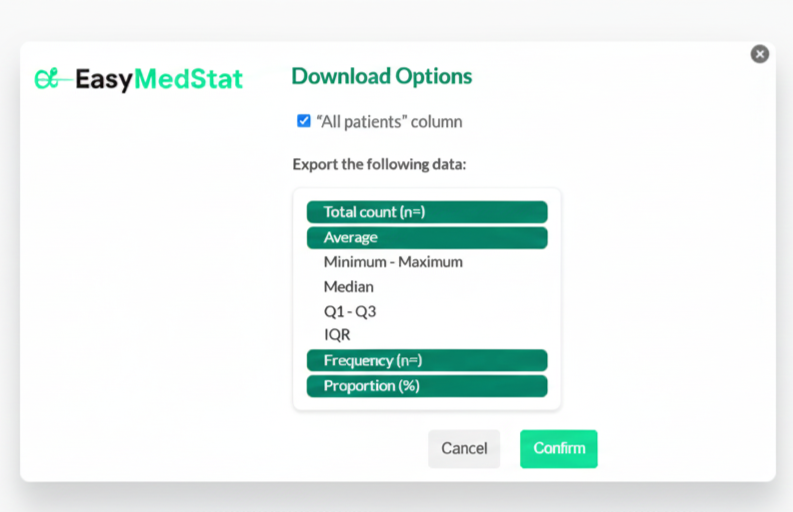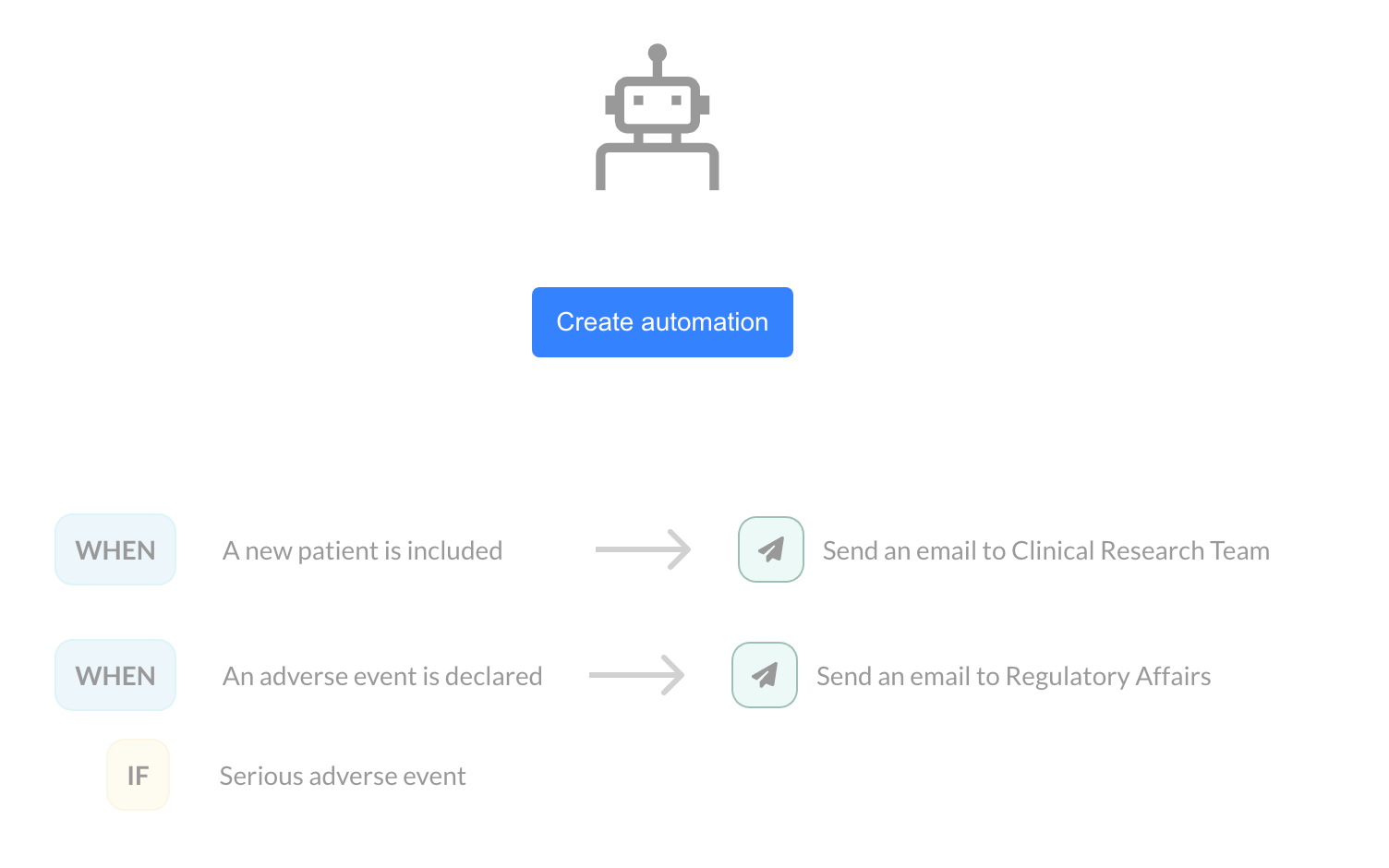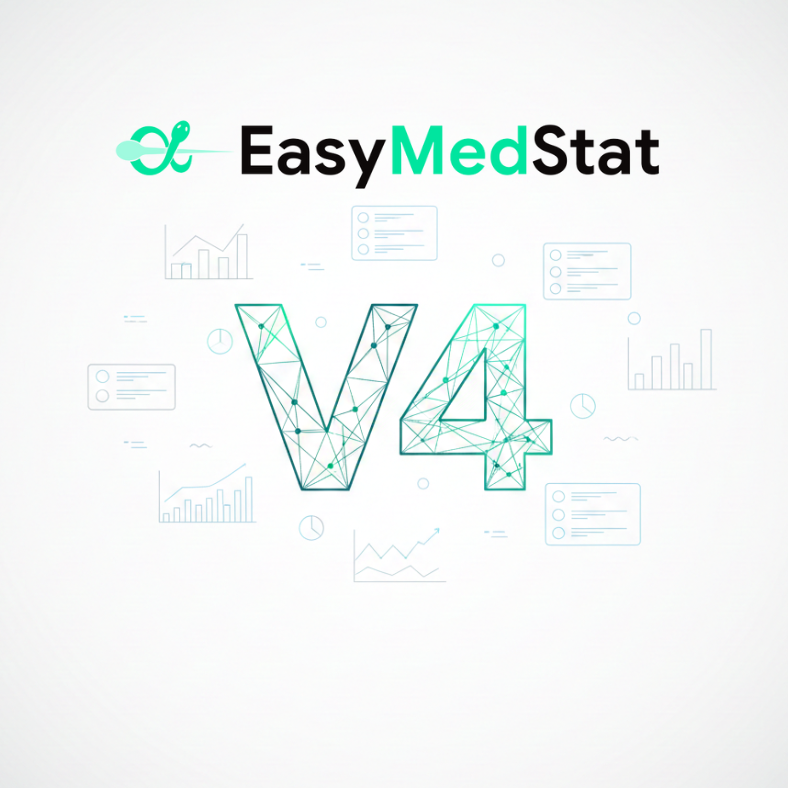Blog
Introducing Event Bounds: A Leap Forward in Clinical Data Management [Product Update 3.34]
In the realm of clinical research, precision is not just a goal; it's a necessity. Recognizing this, EasyMedStat is excited to unveil a groundbreaking feature that marks a significant leap forward in data management and quality control: Event Bounds. This new addition is designed to streamline the data entry process, enhance accuracy, and reduce the time spent on data monitoring. Let's dive into what Event Bounds entail and how they promise to transform clinical data management.
What are Event Bounds?
Event Bounds are a novel feature that allows users to set minimum and maximum date limits for Event variables within Electronic Case Report Forms (eCRFs). This functionality extends beyond the static boundaries applied to Numeric variables, offering both static (fixed dates) and dynamic (patient-specific dates) bounds. Dynamic bounds are particularly innovative, as they adjust based on the values of other Event variables, providing a tailored and flexible approach to data entry.

The Driving Force Behind Event Bounds
The inception of Event Bounds stems from a simple yet pivotal aim: to bolster data integrity and streamline the clinical research process. By enabling precise control over the permissible date range for events, EasyMedStat aims to:
- Enhance Quality Control: Automatically ensure that all entered data falls within acceptable date ranges, minimizing errors right from the data entry phase.
- Reduce Monitoring Time: Lessen the need for extensive manual data verification, freeing up valuable time for researchers and clinicians.
Navigating the Event Bounds Feature
Setting Up Event Bounds
Implementing Event Bounds is a straightforward process:
- Enable the Feature: A checkbox labeled “Minimum and maximum bounds” is now present beside every Event variable. It’s unchecked by default and can be activated as needed.
- Define the Bounds: Upon activation, users can specify minimum and maximum dates directly or set dynamic bounds based on other Event variables.
Dynamic and Static Bounds
The true innovation of Event Bounds lies in its dynamic capability. Users can set bounds relative to other events (e.g., a follow-up visit must occur within a specific timeframe after the initial visit), offering unprecedented flexibility in managing study timelines.
Comprehensive Error Handling
Event Bounds come with an intuitive error handling system. If an entry is out-of-bounds, it won’t be saved, and a clear error message will guide the user toward making a valid entry. This ensures data integrity is maintained throughout the data entry process.
Transforming Clinical Data Management
Event Bounds represent a pivotal advancement in clinical data management. By automating the enforcement of date ranges, EasyMedStat not only enhances the accuracy of data collection but also significantly reduces the burden of data monitoring on research teams.
We invite you to explore Event Bounds and experience firsthand how they can transform your clinical data management practices. With EasyMedStat, you're not just managing data; you're setting new standards in clinical research.
LATEST POSTS

Risques compétitifs : méthodes d’Aalen-Johansen et test de Gray désormais intégrées dans EasyMedStat




Let your friends know!




